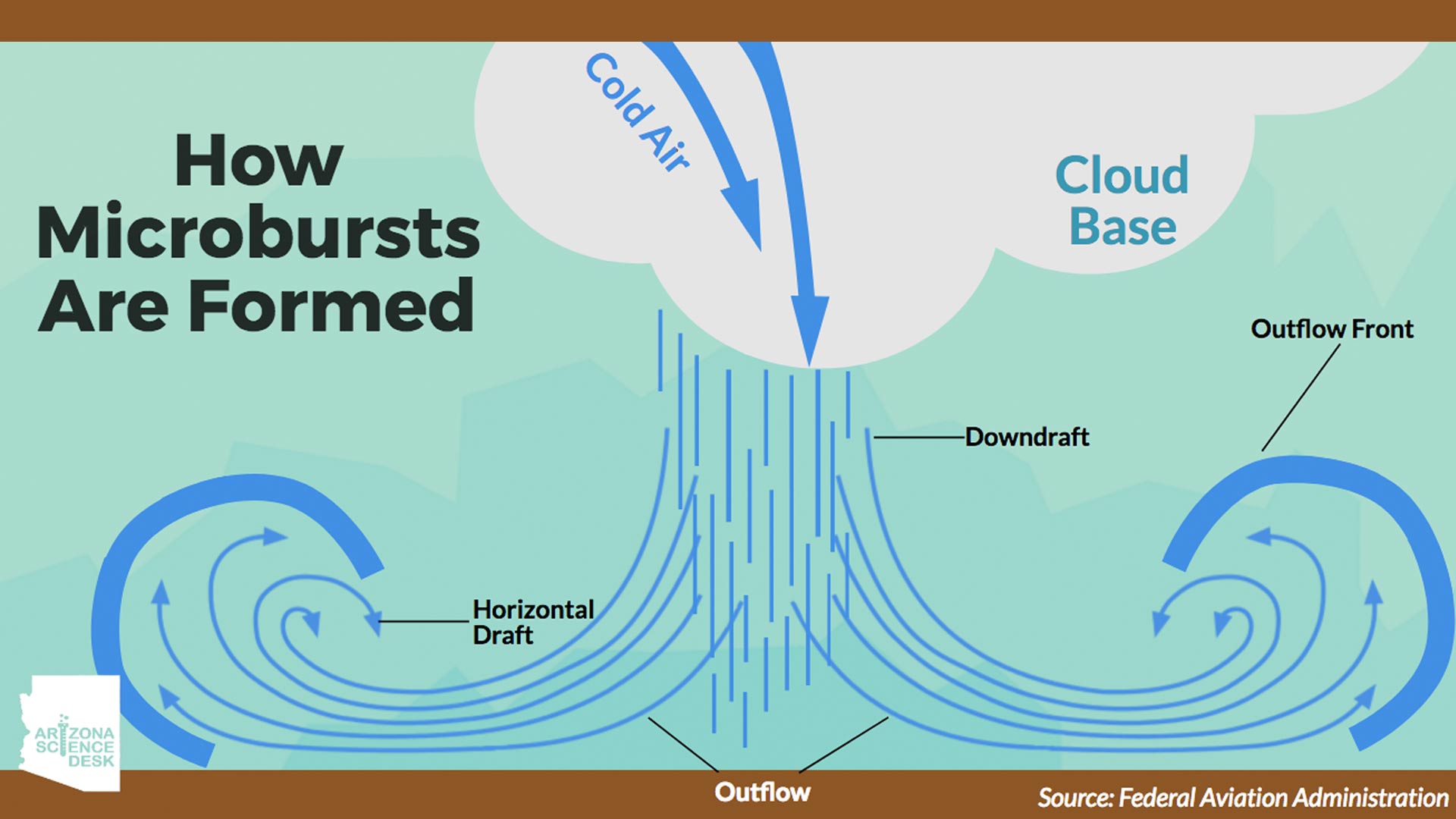
Phoenix is not known for strong winds, but that all changes when monsoons deliver destructive downdrafts like the one that damaged Burton Barr Central Library.
Winds are nature’s attempt to restore balance: Air flows from high pressure to low; hot air rises, cold air sinks. But the 20 to 70 mph downbursts that collapse roofs and uproot trees get their oomph from altitude – and gravity.
In storms, as water vapor condenses, it releases heat, which causes updrafts. As rising air reaches colder altitudes, water freezes, again releasing heat, causing more updraft. Gradually, the air parcel cools and falls, and the process reverses itself, said Marvin Percha, a meteorologist at the National Weather Service in Phoenix.
“As it falls, it accelerates toward the ground, and once it hits the ground, that’s what generates the downburst,” Percha said.
When that happens, the force is strong enough to rattle even library roofs.
Although the NWS did not have wind measurements for Burton Barr Central Library itself, Percha says that 40 mph winds were recorded on radar.
The NWS divides downbursts into microbursts and macrobursts, depending whether they measure larger or smaller than 2.5 miles.


By submitting your comments, you hereby give AZPM the right to post your comments and potentially use them in any other form of media operated by this institution.